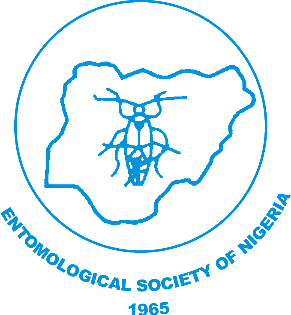Evaluation of Three Methods of Artificial Colony Division in Honeybee, Apis mellifera adansonii (Hymenoptera: Apidae): Initial Response of Daughter Colony
DOI:3618/NJE/2102/92.0180
BABARINDE, S. A., ODEWOLE A. F., ADEBAYO, T. A. O., JULIUS, I., and OLABODE, S. M.
ABSTRACT: One of the major problems facing beginner apiculturists in tropical countries is late colonization of baited hives. Towards providing practical solution to this problem, three methods of artificial colony division were experimented in Ogbomoso (longitude 4°10’E, latitude 8° 10’E), Nigeria, a derived savanna zone, using top bar hives. Hives with strong and active colonies (aged > 12 months) were used as Mother colony and were divided into new hive tagged Daughter colony hives. Division Method A involved placing Daughter colony hive at original place of Mother Colony hive and taking Mother colony hive to a location 30 m away from its original position. Division Method B involved placing Daughter colony hive on top of Mother colony hive, maintaining original position of Mother colony hive and facing opposite direction. Division Method C involved placing Daughter colony hive at a new place, 30 m away from its Mother colony hive. In each of the three methods, three brood combs and four honey combs were placed in the new hive tagged Daughter colony. The remaining space on the hive was filled with empty top bars. Thereafter, corrugated asbestos were used as roofing materials to prevent adverse weather condition. The results indicate that Method A was the best, having significantly (P<0.05) higher Daughter colony weight gain than Methods Band C and having no pest infestation or, intruder. Pests and intruders encountered with Methods Band C were responsible for their failure. The pests were Oecophylla longinoda (Latreille, 1802), Galleria melonella (Linnaeus, 1758) and Aethina tumida Murray 1867, while Brachymeria species (Westwood, 1829) was the only intruder encountered in the study. A. tumida was most frequently encountered while Brachymeria species was least encountered.
Keywords: Honey bees, colonization, artificial colony division, honey bee pests, top bar hives.
